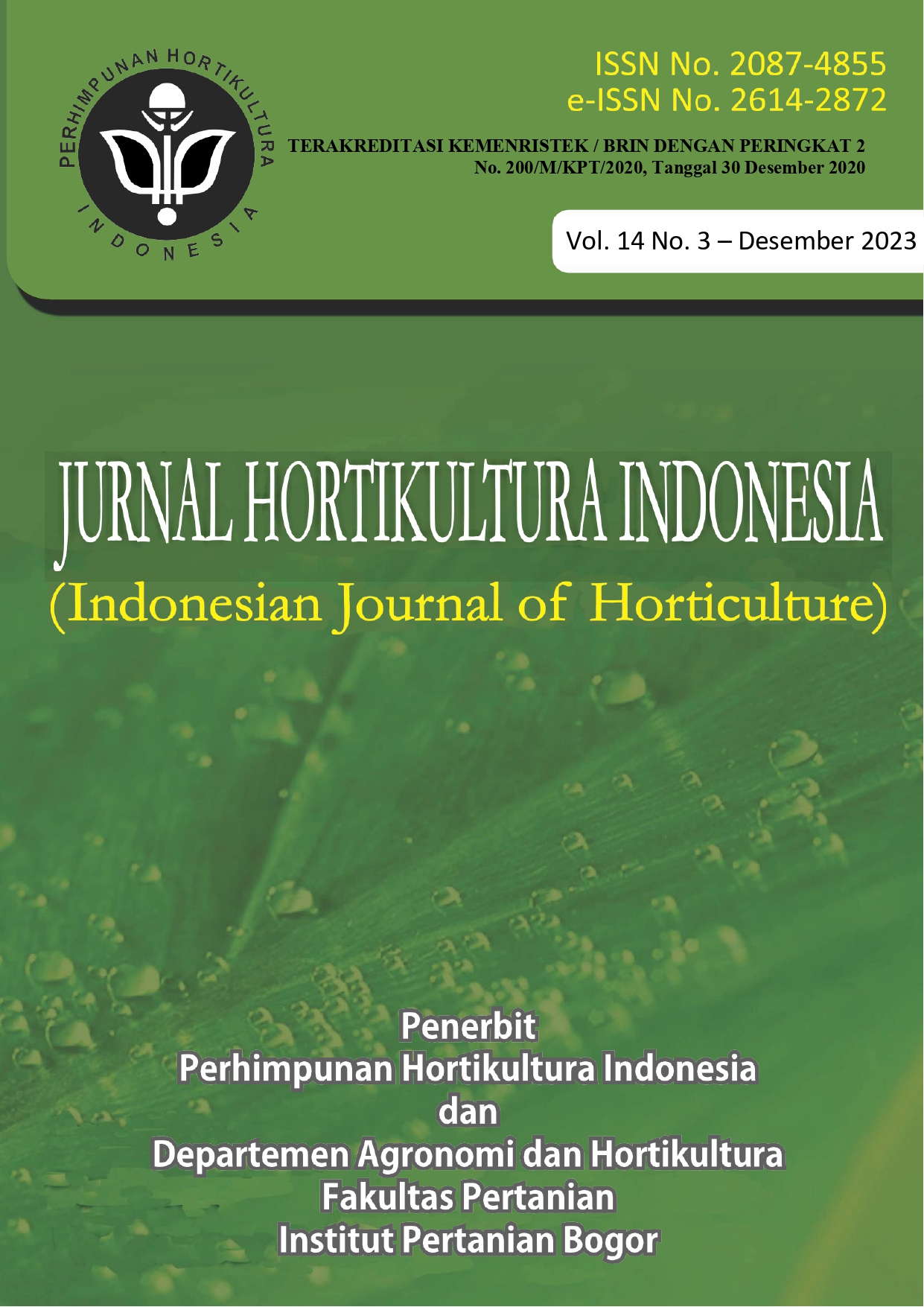Pengaruh Cekaman Air dan Interval Pemupukan Daun terhadap Pertumbuhan Tanaman Katuk (Sauropus androgynous (L.) Merr.)
Effect of Water Stress and Leaf Fertilization Interval on the Growth of Katuk (Sauropus androgynous (L.) Merr.)
Abstract
Katuk is vegetables which can fulfil human nutritional needs. Plants experiencing water stress require additional nutrients in the growth process, namely by means of fertilization. The study aimed to determine the effect of water stress and foliar fertilization interval on the growth of katuk plants. The experimental design used was a split-plot design in a completely randomized group design (RKLT) consisting of 2 factors: leaf fertilization interval as the main plot and water stress as a subplot. The foliar fertilization interval consisted of 3 levels, namely P0 (without fertilization), P1 (2 weeks), and P2 (4 weeks). The water stress factor consists of 4 levels, namely C1 (40% field capacity (KL)), C2 (60% KL), C3 (80% KL), and C4 (100% KL). The study was conducted with three replications obtained from 12 combinations so that there were 36 experimental units. Water stress did not significantly affect the growth of katuk plants. The growth of plants that received a reduction in water supply of up to 40 field capacity was still equivalent to plants with water supply of up to field capacity (100%). The time of foliar fertilization had a significant effect on the parameters of the number of branches, number of leaves, and harvest weight at intervals of 2 and 4 weeks. The interaction between water stress and foliar fertilization did not affect the growth of katuk plants.
Keywords: effect, nutrients, nutrition, parameters, vegetables
Downloads
You are free to:
- Share — copy and redistribute the material in any medium or format for any purpose, even commercially.
- Adapt — remix, transform, and build upon the material for any purpose, even commercially.
- The licensor cannot revoke these freedoms as long as you follow the license terms.
Under the following terms:
- Attribution — You must give appropriate credit, provide a link to the license, and indicate if changes were made. You may do so in any reasonable manner, but not in any way that suggests the licensor endorses you or your use.
- ShareAlike — If you remix, transform, or build upon the material, you must distribute your contributions under the same license as the original.
- No additional restrictions — You may not apply legal terms or technological measures that legally restrict others from doing anything the license permits.
Notices:
You do not have to comply with the license for elements of the material in the public domain or where your use is permitted by an applicable exception or limitation.
No warranties are given. The license may not give you all of the permissions necessary for your intended use. For example, other rights such as publicity, privacy, or moral rights may limit how you use the material.













